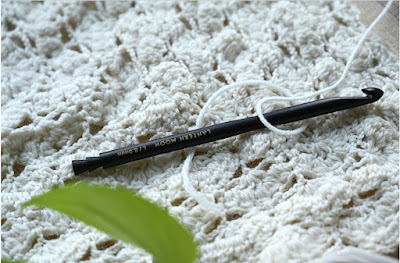Guide to Crochet Straight Edges
 |
Once you learn to hold your crochet hooks, you can apply them to the making of any project. You may be recommended to start small with either a scarf or a dishcloth before moving on to garments and accessories. Straight or neat edges are an important factor when it comes to crochet projects, especially with visible edges such as blankets, scarves, or even a basic dishcloth. There are multiple reasons why you don’t always get straight edges. It can be due to a miscount in stitches or an unintentional increase or other things. No matter what you crochet, neat edges makes your project look attractive.
To crochet straight edges, here are some tips and techniques you can use. Whether you work with single-ended crochet hooks for regular crochet or interchangeable Tunisian crochet hooks without attaching the cord for the craft, you can work out straight edges. The choice of the yarn has nothing to do with edges till the time you work with the yarn weight with the crochet hook size. If you have a crochet hook set you have multiple options to work with your gauge for a wide range of projects.
So, let’s get started.
- Work a very neat Foundation Chain
Make sure to create a foundation chain with consistent tension. Tension that is too tight or too loose can result in uneven edges. Pay attention to the size of the chain stitches and try to keep them uniform. If you find it difficult to have a neat start due to the crochet hook size, you can switch to one or two sizes bigger crochet hooks for the foundation chain.
You can also avoid the foundation chain and get started with a foundation row of single crochet or double crochet. This ensures that you have a foundation without working the row twice.
- Turning Chains
When you start a new row, use turning chains to bring the height of the next row to the correct level. The number of turning chains required depends on the stitch you are using. For example, if you're working double crochet stitches, typically you would use three turning chains to bring the height to match the stitch. Different basic crochet stitches require different numbers of turning chains. For single crochet (SC), you need an extra chain while half double crochet (HDC) stitch requires two, and the taller stitches require more.
The dense stitches such as SC and HDC do not count the turning chain in the row but the taller stitches may count the turning chains. Go through the patterns carefully, so that you are aware of the steps by the crochet pattern designer.
Messing up the number of turning chains will get your edges awry so make sure to double-check before you begin the row and round. If you realize your mistake in the same row or round, simply rip it out and start again.
- Stitch Placement
Pay attention to where you insert your hook when making the first stitch of each row. Ensure that you insert the crochet hook under both the top loops of the stitch from the previous row. This helps maintain a consistent edge.
Begin and end your row carefully so that the stitches of each row is completely aligned. If you are working on SC pattern, then every row will be started with the 2nd stitch of the foundation chain and hence every 2nd stitch of the row below. If you are working with taller stitches too, start the row from the same stitch. This uniform placement will help you have neat edges.
- Stitch Count
Count your stitches at the end of each row or periodically to ensure you have the correct number of stitches. Adding or skipping stitches can cause uneven edges. Double-checking the stitch count helps maintain straight edges. If you are working on a wide project with 100+ stitches, then working with stitch markers, using a row counter will help you not miss the count. Place stitch markers after 10-20 stitches and you will have manageable sections to work with.
- Blocking
Even if you’ve worked the project according to instructions you may still not have straight edges. You do not need to be disheartened as you can still have neat edges. After completing your crochet project, blocking can help even out any irregularities in the edges. Wet blocking or steam blocking the finished piece can help relax the fibers and make the edges appear straighter and more uniform. The choice of blocking is always decided by the yarn. Follow the label instructions for the best method of blocking. Also, work with proper blocking tools so that you get the desired results.
- Edging
Even after you’ve completed your project and do not have a straight edge, you can still create a border. Adding a border or edging to your crochet project can also help straighten the edges. You can use a simple single crochet or slip stitch border to tidy up the edges and give them a clean finish. The single crochet stitch or the reverse crochet stitch is one of the best borders to add to any project.
Remember that practice makes perfect. With time and experience, you'll improve your crochet skills and create neater, straighter edges. Premium crochet hooks from the Lantern Moon Collection offer a smooth crafting experience. The handcrafted ebony wood hooks works for all your crochet projects.



Comments
Post a Comment